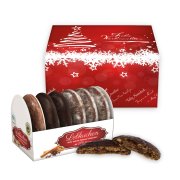
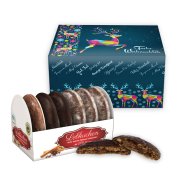








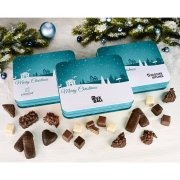
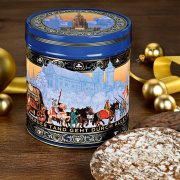
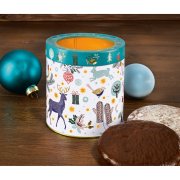
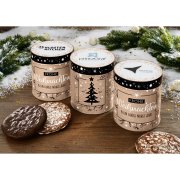
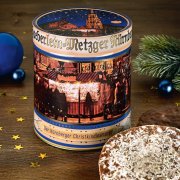
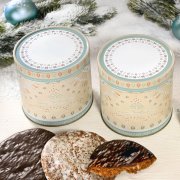
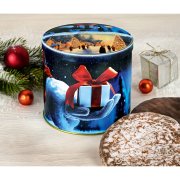
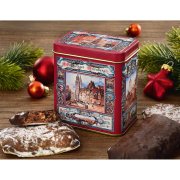
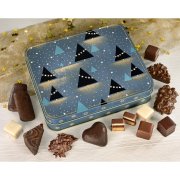
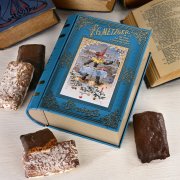
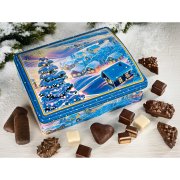
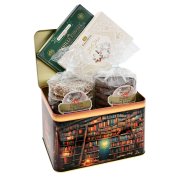







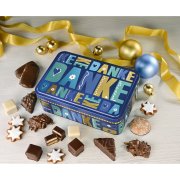

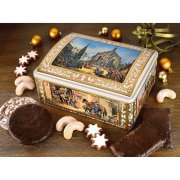
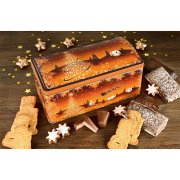

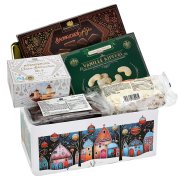

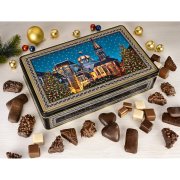
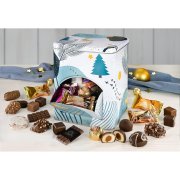



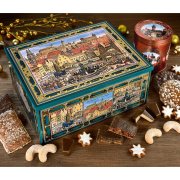
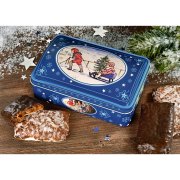

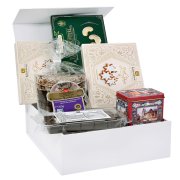
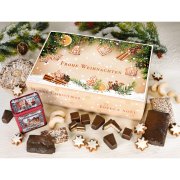

























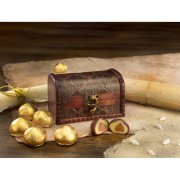
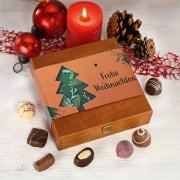
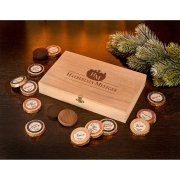
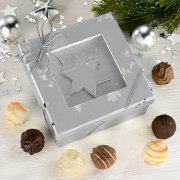
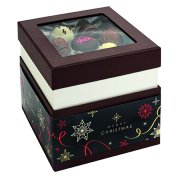
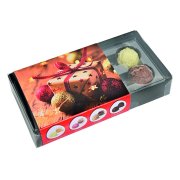
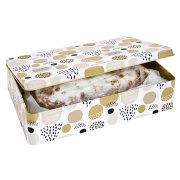
|
The Nuremberg Elisen gingerbread is especially in the winter time a very popular pastry and for many people an integral part of the Christmas tradition. Its spicy smell and the juicy consistency characterize the delicious honey cake. And of course the incomparable sweet taste. The world-famous Christmas biscuit, which is often sold in a filled gingerbread can, looks back on a long history and an astonishing variety.
|
 |
|
Well, the origin of the name is not clear, on the one hand, the term gingerbread could be derived from the Latin "Libum" (flat bread), on the other hand makes the Germanic word "loaf" sense. However, one is relatively sure as far as history is concerned. Because first records go back to the year 350 BC. Christ, which says that already the Romans brushed their cakes with honey before baking. And also the Egyptians knew already small cakes which were sweetened with honey, as grave goods prove. The gingerbread as it is known today was originally invented in the 13th century in the Belgian town of Dinant. Over the course of several decades, it spread through Aachen to Nuremberg and was refined further and further. First, the gingerbread (pepper was then the collective term for all spices) was known only in the monasteries. There he was baked and eaten all year round, as he is very durable due to the high sugar content. |
 |
|
In 1395, first gingerbread bakers outside the Nuremberg monastery walls were mentioned. The craft spread quite quickly in the trading city and each of the gingerbread had its own well-kept recipe, but these are usually based on the same basic ingredients:
In addition to cinnamon and cloves, ginger, cardamom, coriander, mace, nutmeg, fennel and allspice are typical gingerbread spices. Despite this manageable amount of ingredients, over the centuries many different varieties of gingerbread have developed, which are essentially divided into "brown gingerbread" and "wafer gingerbread". |
The recipe of this gingerbread is based on a relatively high flour content, which together with the classic spices and the traditionally used honey (today often used also sugar syrup) results in a firm and kneadable dough. This can typically be refined with different nuts or candy. Due to the somewhat firmer texture, this dough is also very easy to cut and shape, which is why it mainly serves as the basis for the most varied gingerbread figures.
|
The best-known form here is certainly the gingerbread house , which is regionally referred to as the gingerbread house, crunchy house or witch's house. Although the gingerbread house based on the Brothers Grimm fairy tale "Hänsel and Gretel", but it is in addition to the German-speaking countries in Scandinavia, Eastern Europe and the English-speaking area widespread. |
 |
 |
But you should not forget the gingerbread man here. The gingerbread man is more common in English-speaking countries, but is gaining more and more worldwide reputation and popularity. Part of this is certainly the film "Shrek" at. Surprisingly, the gingerbread man looks back on a long history, because he has been known since the 16th century. |
In contrast to the brown gingerbread is the family of wafer gingerbread. These must consist of at least 7% nuts, half of which must be almonds, hazelnuts or walnuts. The second half consists mostly of other so-called "oilseeds", such as sunflower seeds or poppy.
The dough of the wafer gingerbread is very soft and is usually applied to the wafers with a syringe bag. The thin dough slice fulfills two functions: Firstly, it gives the gingerbread sufficient stability during production, and secondly, it prevents the dough from burning on the sheet during baking. After dosing, the raw mass is distributed evenly with a special tool, the so-called "gingerbread bell". As the name suggests, this is reminiscent of a wooden bell and is simply placed with the opening on the individual dough portions. By turning at the top of a down-mounted metal bar distributes the mass evenly on the wafer.
This gingerbread dances in comparison with his brothers something out of line, because he is usually baked on a square wafer and has a strikingly bright color. This is based on the relatively high proportion of whole egg or protein, which is predetermined by the corresponding gingerbread recipe. In addition, it may consist of a maximum of 40% flour.
|
These gingerbread are closely related to the classic "Wafer gingerbread". However, since they must have a nut content of at least 12.5%, they are higher quality and much tastier. |
 |
For a gingerbread to become a masterpiece and to bear the protected term "Elisenlebkuchen" (german for Elisen gingerbread), it must meet very specific criteria: it must consist of at least 25% almonds, hazelnuts and / or walnuts (no other nuts may be used here!) And may contain a maximum of 10% flour. The most delicious gingerbread, such as our finest Nuremberg Elisen gingerbread , even completely renounce the flour and have a nut content of almost 40%!
Due to the long history of the gingerbread several regional variations of the Pfefferkuchens have been created in Germany. Some of the best-known gingerbread specialties are, in addition to the Aachen Printen, certainly the Pulsnitzer gingerbread or the Offenbacher Pfeffernüsse. But the Neisser confectionery and the Coburger Schmätzchen are nationally known Christmas cookies.
The Printen are a variation of the brown gingerbread and exist in its basic form since the 15th century. The name comes from the Dutch "prent" and the English "print" and refers to the manufacturing method, because the dough is pressed in this specialty in a wooden form. Depending on the occasion, these can also be decorated with ornate patterns or have special shapes. The term "Aachen Printen" is today a regionally protected designation.
|
|
|
This specialty is 2-3 cm small hemispheres made of brown gingerbread dough with white sugar coating. The pepper nuts were invented in the 18th century and their taste is a little spicier than other comparable Christmas cookies. Regionally, there are different variations, but the best known are the "Mecklenburger Pfeffernüsse" and the "Offenbacher Pfeffernüsse", for which even Goethe raved.
 |
 |
These gingerbreads are known since the 16th century and are also based on the brown gingerbread, but they are mainly characterized by the rye flour used. In their production, different dough portions are mixed together, which have been stored for different periods. After baking and slicing, the gingerbreads still get a thick chocolate coating.
If you are hungry for juicy delicacies, you can simply bake this recipe yourself! You can then use this gingerbread perfectly as a basis for your own figures. Simply cut out or cut out the desired shape.
|
 |
But it is easy if you order the original Nuremberg gingerbread directly from us in the online shop. Here you have a large selection of variations and can also convince yourself of the quality of our other gingerbread products!